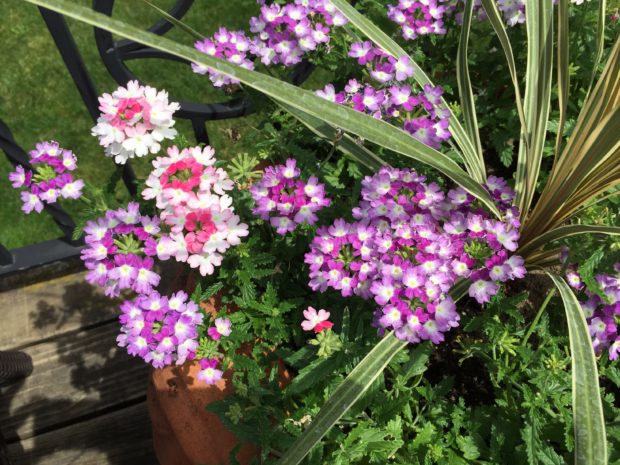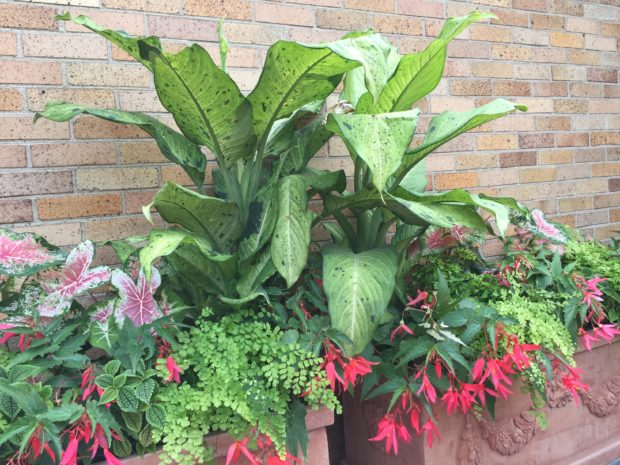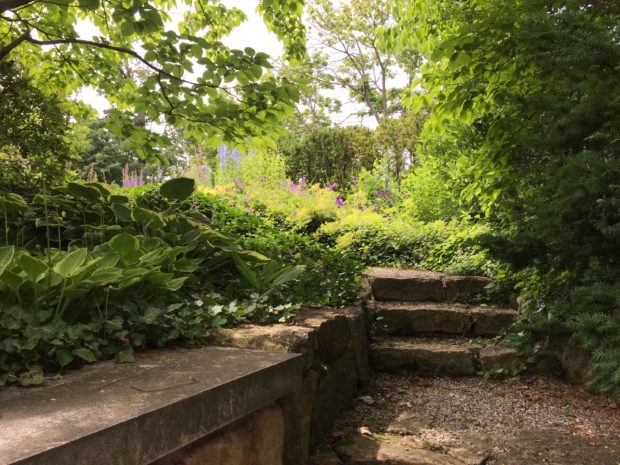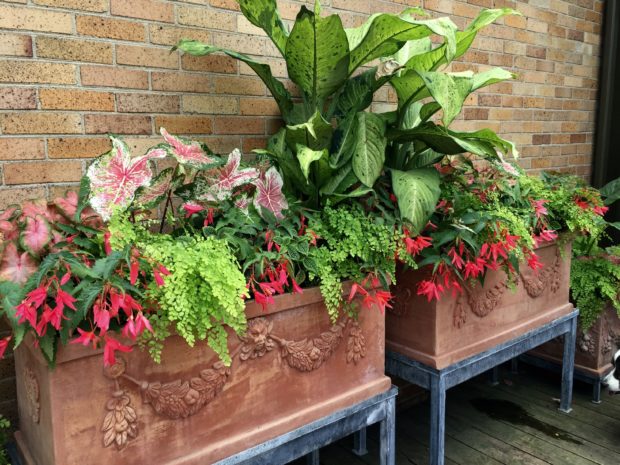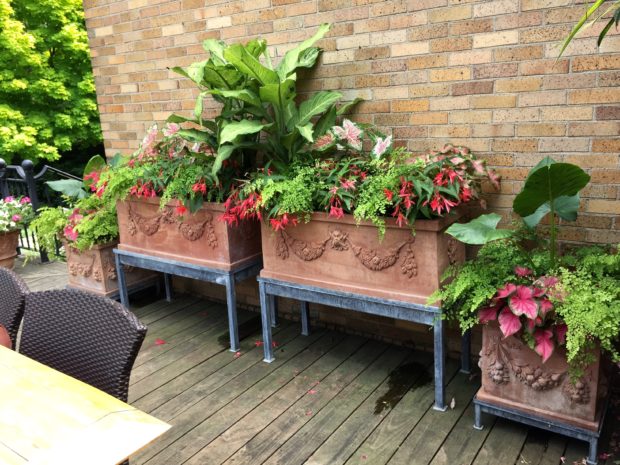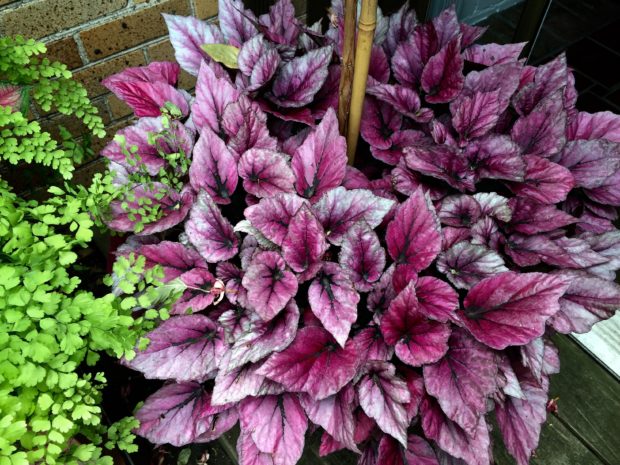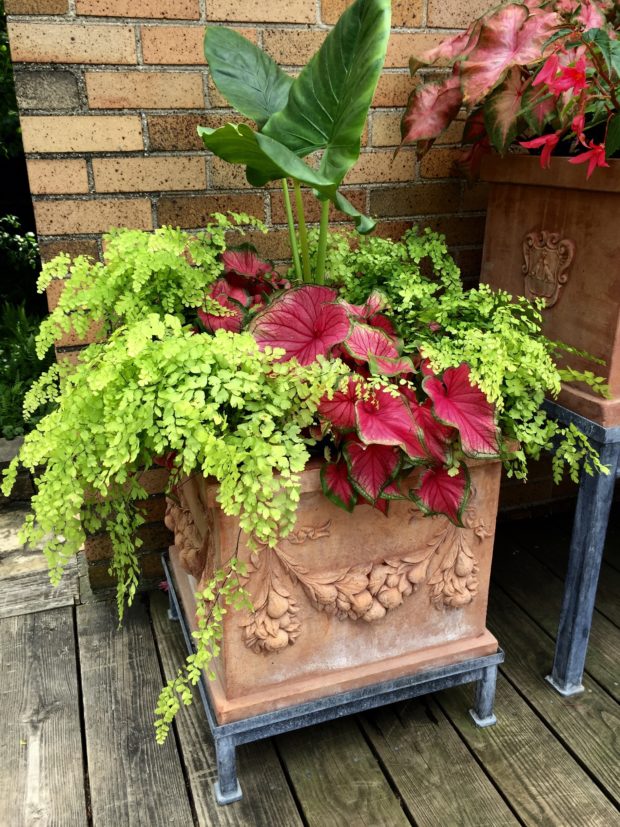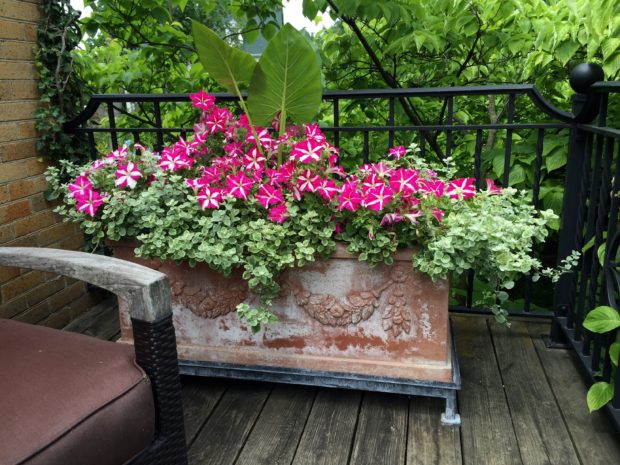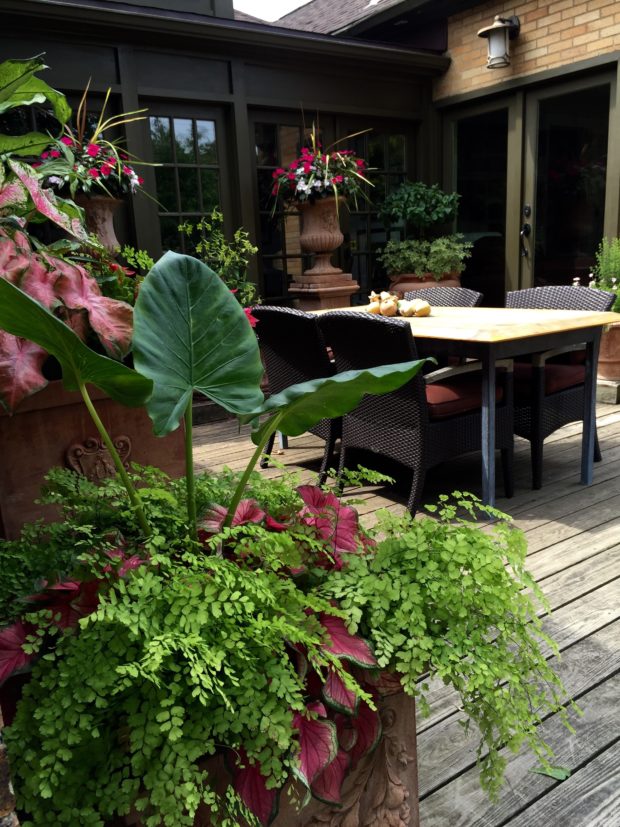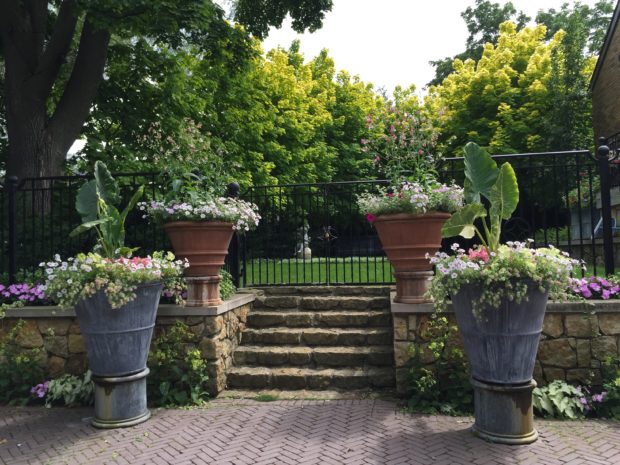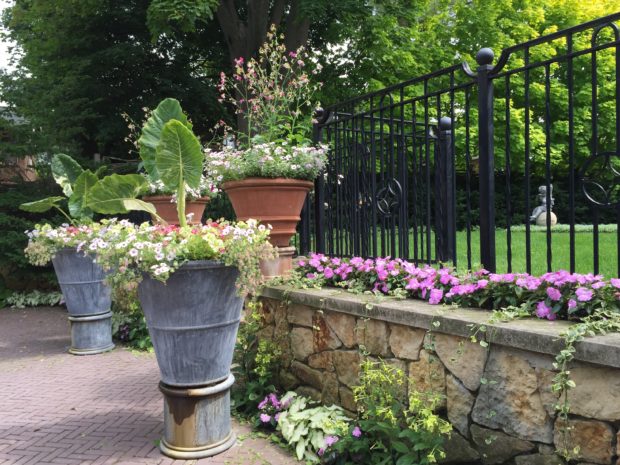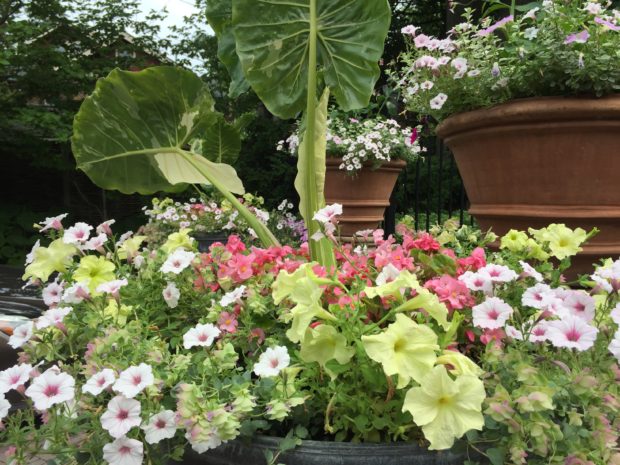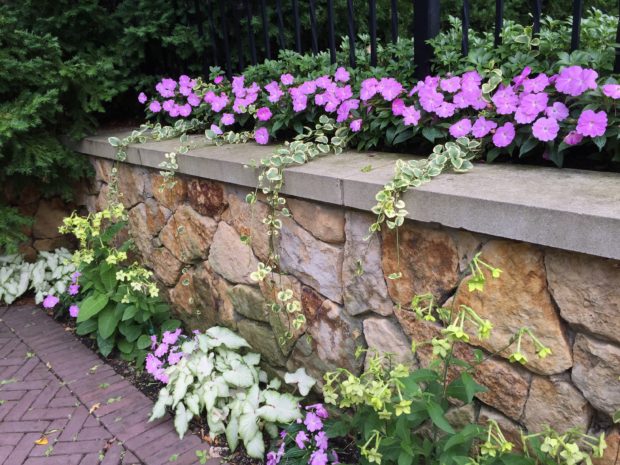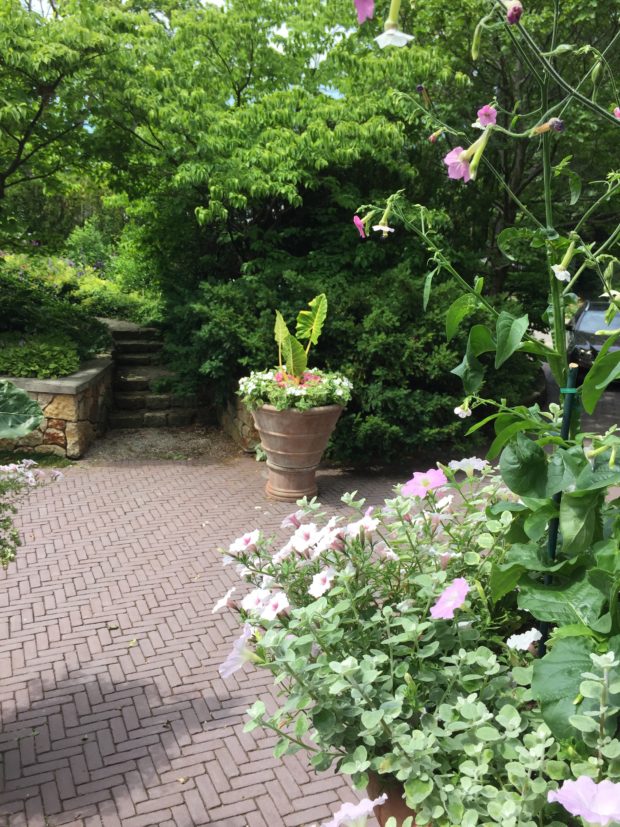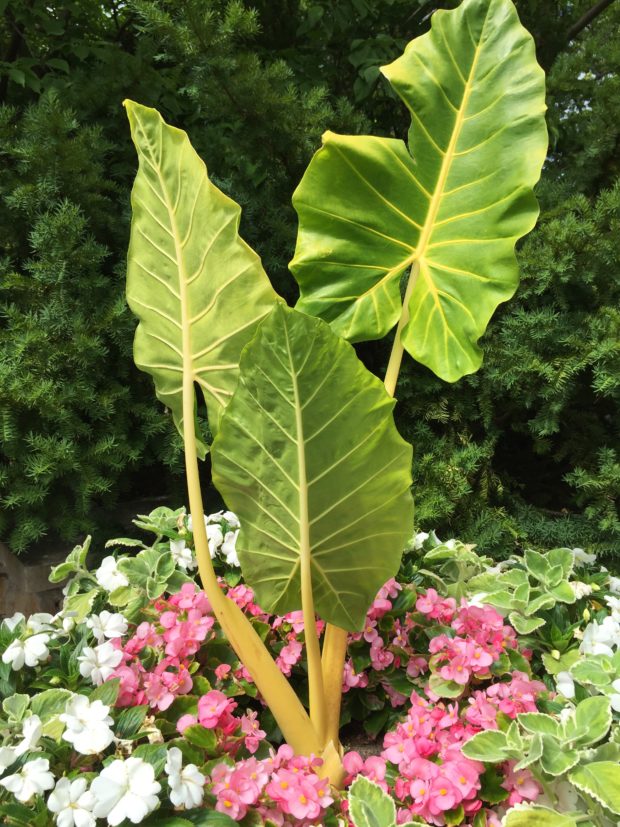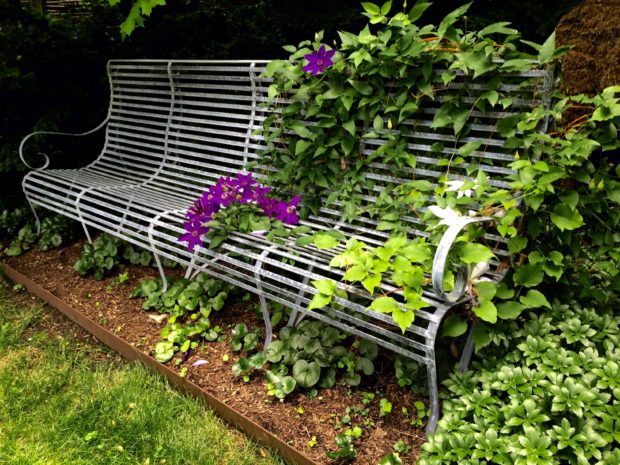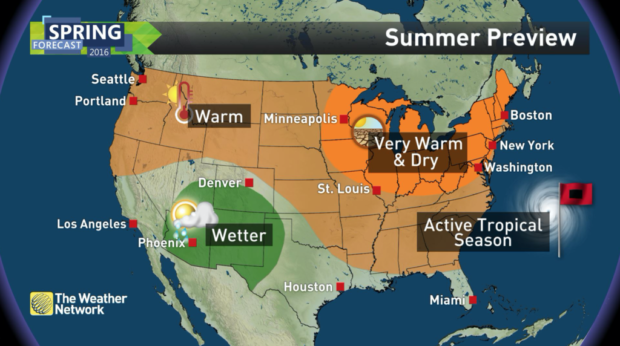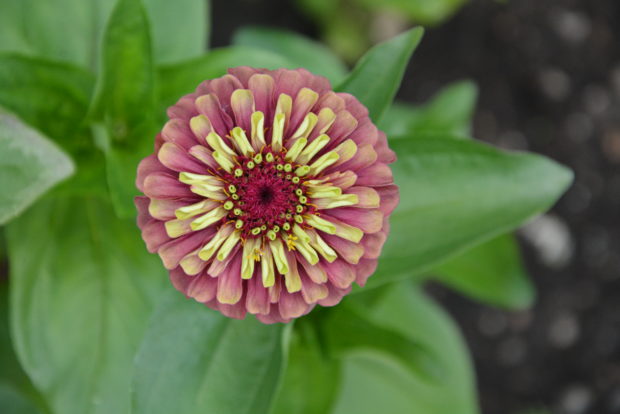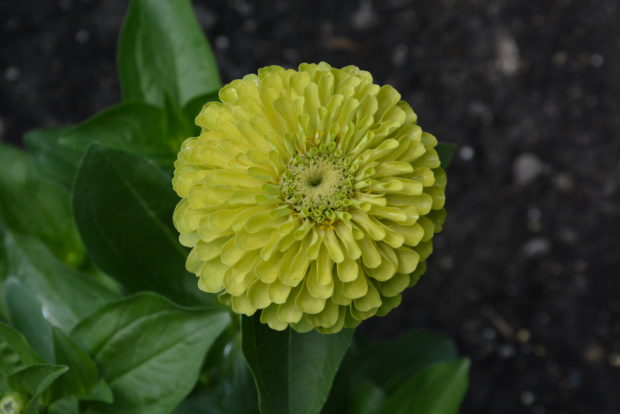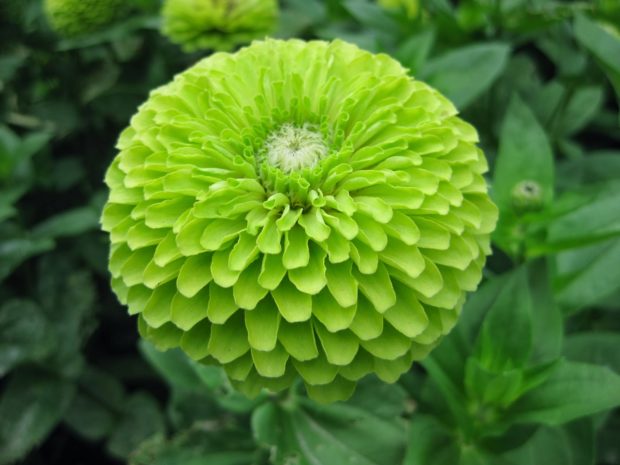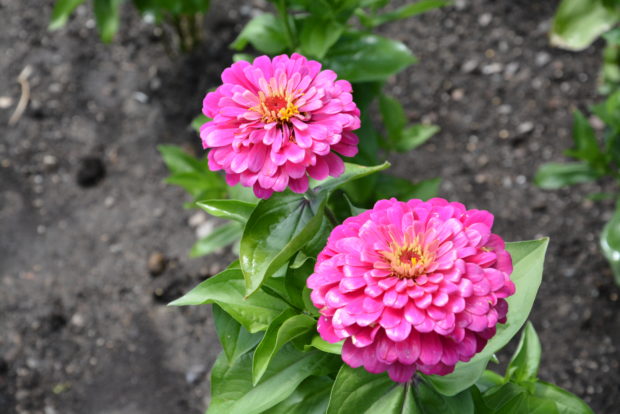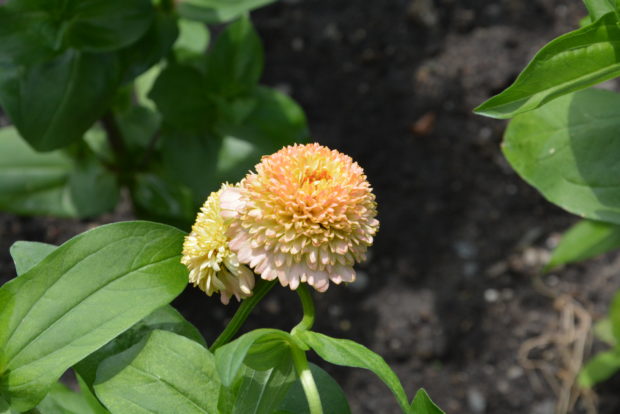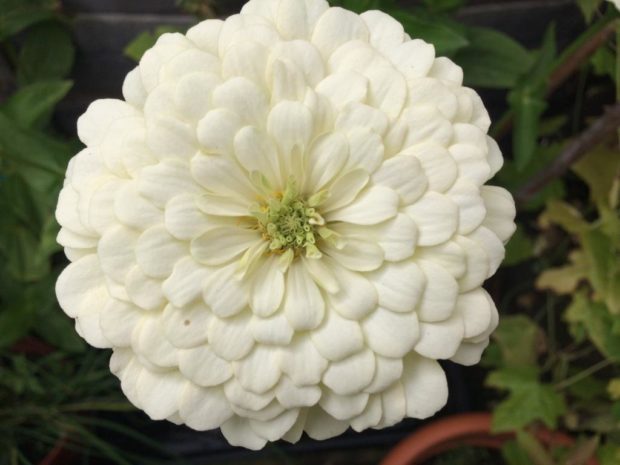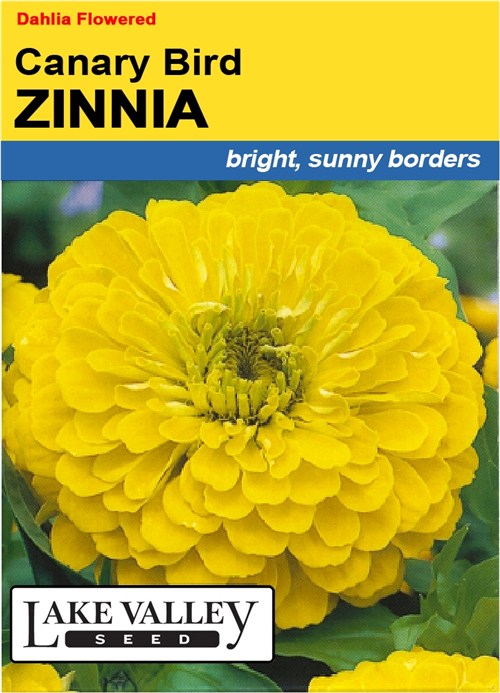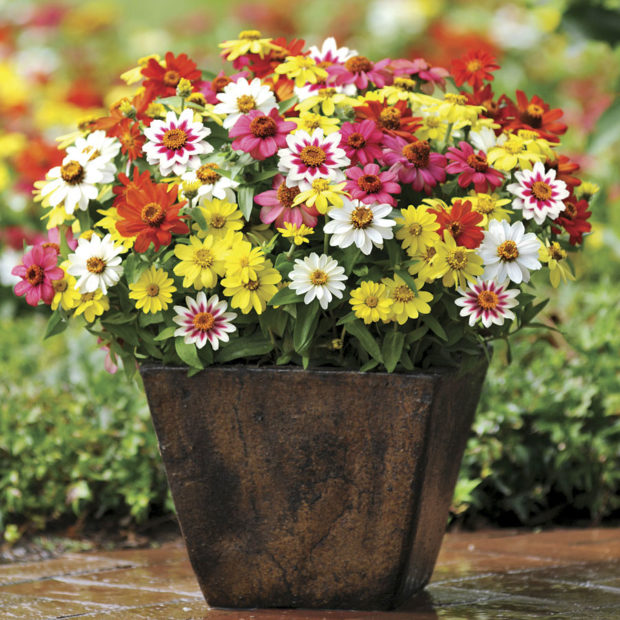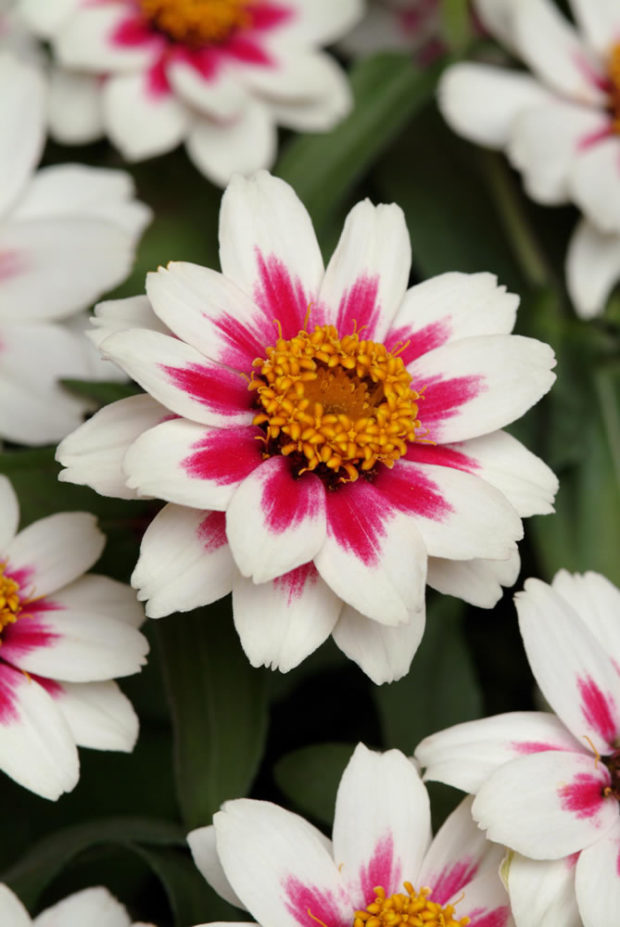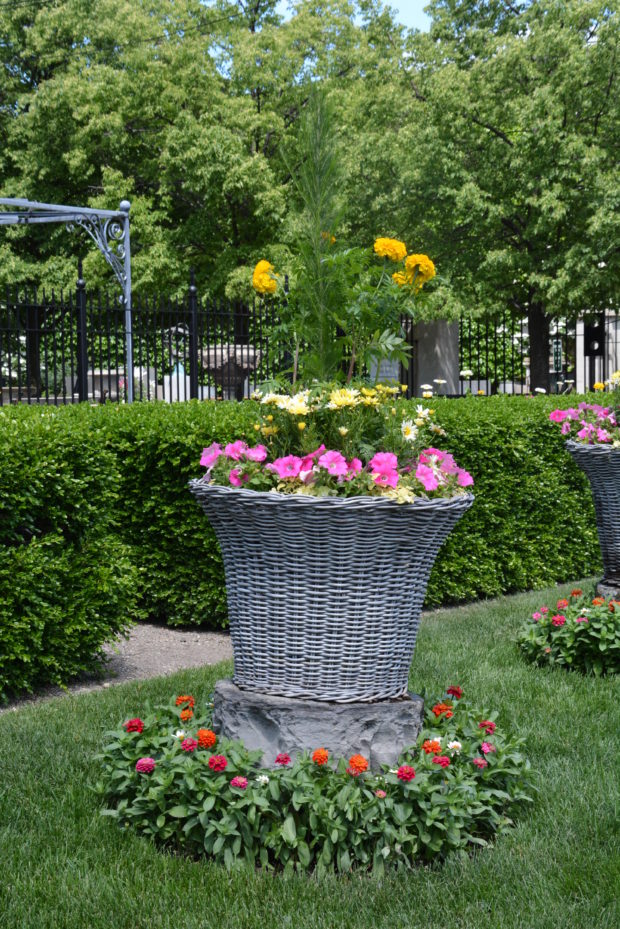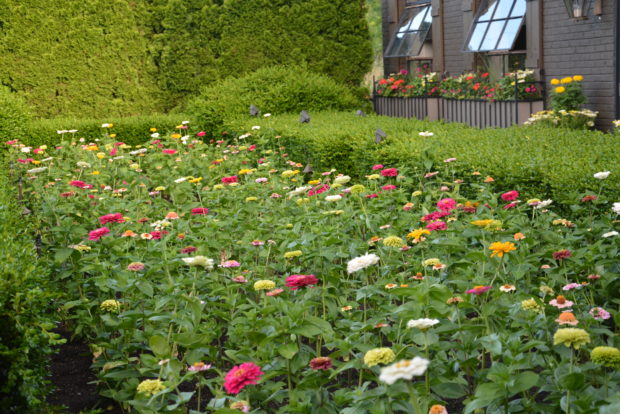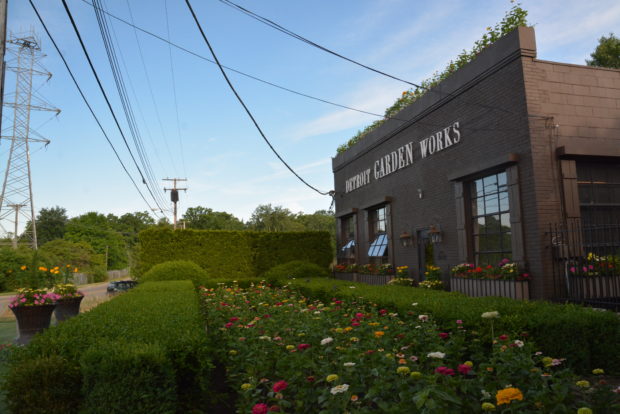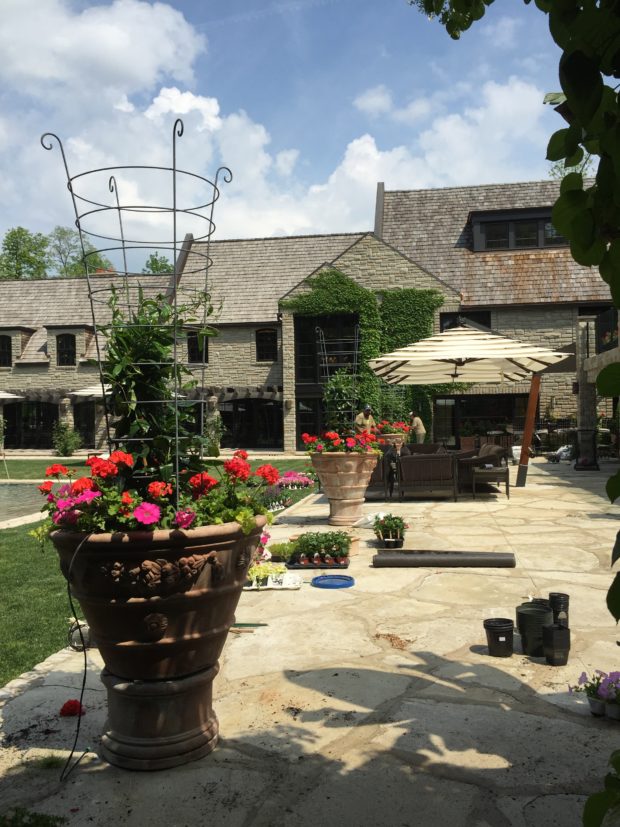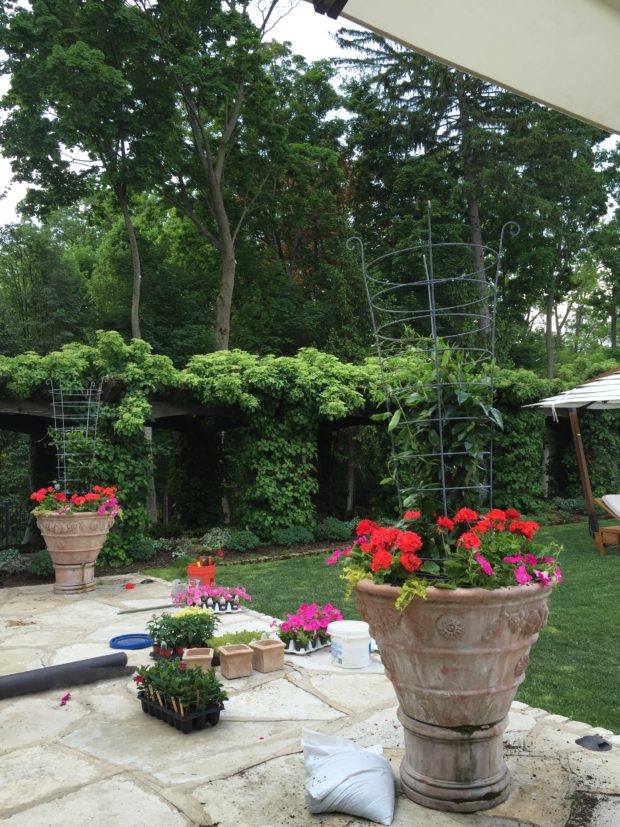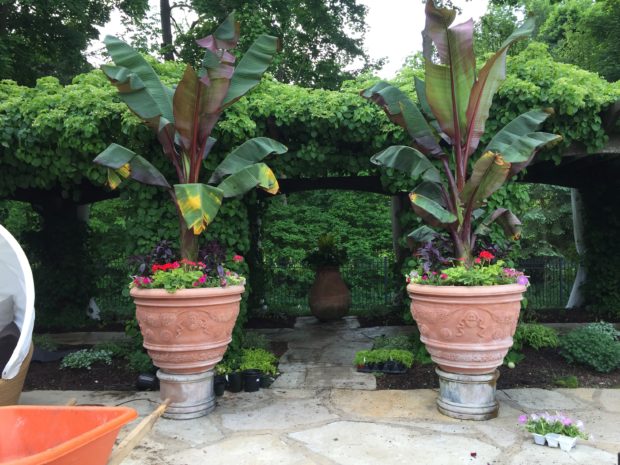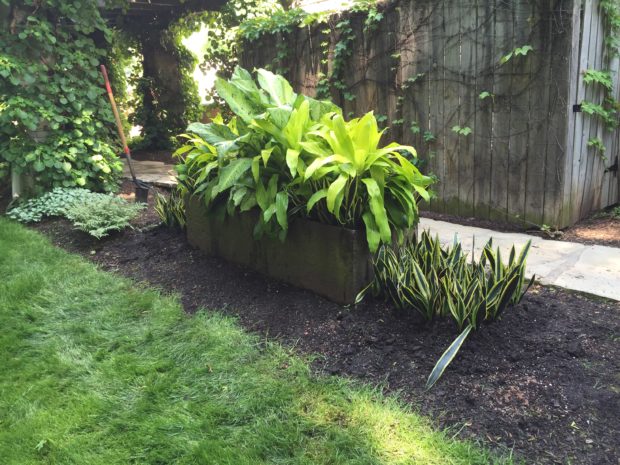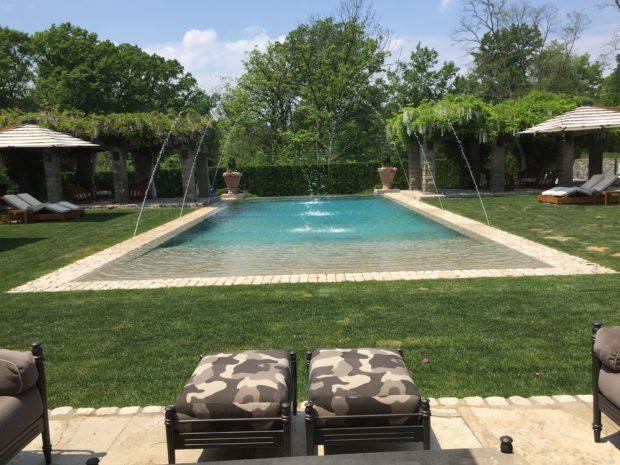 Sometime between mid July and mid August, the Limelight hydrangeas come in to bloom. It is a moment worth waiting for. The fast growing large leaved plants bloom profusely on the current year’s growth. They are easy to cultivate, asking for not much more that some decent light and some regular water. The spectacularly large flowers are a gorgeous mixture of lime green and white. Limelight hydrangeas are known for their sturdy stems, which keep those flowers aloft in all but the stormiest weather. They do need a lot of room. A single well grown shrub can grow 8′ tall by 8′ wide. Hydrangea “Little Lime”, pictured above, is a hybrid of Limelight that only grows 4-5 feet tall, and as wide. They make themselves right at home in an informal or cottage style garden. But its relaxed habit of growth can look just as interesting in an alternative universe – a more formal planting.
Sometime between mid July and mid August, the Limelight hydrangeas come in to bloom. It is a moment worth waiting for. The fast growing large leaved plants bloom profusely on the current year’s growth. They are easy to cultivate, asking for not much more that some decent light and some regular water. The spectacularly large flowers are a gorgeous mixture of lime green and white. Limelight hydrangeas are known for their sturdy stems, which keep those flowers aloft in all but the stormiest weather. They do need a lot of room. A single well grown shrub can grow 8′ tall by 8′ wide. Hydrangea “Little Lime”, pictured above, is a hybrid of Limelight that only grows 4-5 feet tall, and as wide. They make themselves right at home in an informal or cottage style garden. But its relaxed habit of growth can look just as interesting in an alternative universe – a more formal planting.
 This mature size is not only friendly to smaller gardens, it looks great in a mass planting. This landscape is situated on a very steep slope, so these Little Limes are responding to the force of gravity. Some gardeners may find their sprawling habit unruly and irritating. Others will find them charming, even beautiful. They certainly endow the late summer garden with their willingness to bloom. All of the pictures in this post but one were taken on days with temperatures above 90 degrees.
This mature size is not only friendly to smaller gardens, it looks great in a mass planting. This landscape is situated on a very steep slope, so these Little Limes are responding to the force of gravity. Some gardeners may find their sprawling habit unruly and irritating. Others will find them charming, even beautiful. They certainly endow the late summer garden with their willingness to bloom. All of the pictures in this post but one were taken on days with temperatures above 90 degrees.
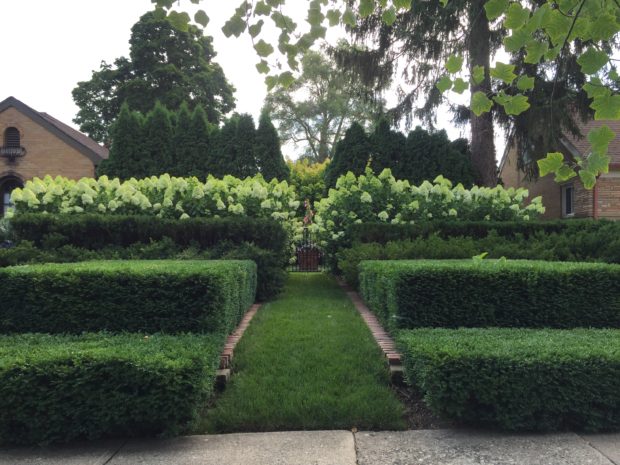 My Limelights are 12 years old, or more. Some years I prune them down to between 24″ and 30″ inches. Some years I only remove the old flower heads and 6″ of stem. I always prune them in the spring, when the leaf buds begin to swell. The final result in terms of the flowering and height is fairly uniform, year to year, no matter how I prune. This illustrates the important of choosing shrubs whose mature size will fit the space that is available. I have been watering them twice a week for the past several months, as we have had very little rain. The group to the far right in this picture get the least water, as they are difficult to reach. They are shorter than usual, but they have plenty of flowers. How reliable they are to grow and bloom is a very good reason to plant them.
My Limelights are 12 years old, or more. Some years I prune them down to between 24″ and 30″ inches. Some years I only remove the old flower heads and 6″ of stem. I always prune them in the spring, when the leaf buds begin to swell. The final result in terms of the flowering and height is fairly uniform, year to year, no matter how I prune. This illustrates the important of choosing shrubs whose mature size will fit the space that is available. I have been watering them twice a week for the past several months, as we have had very little rain. The group to the far right in this picture get the least water, as they are difficult to reach. They are shorter than usual, but they have plenty of flowers. How reliable they are to grow and bloom is a very good reason to plant them.
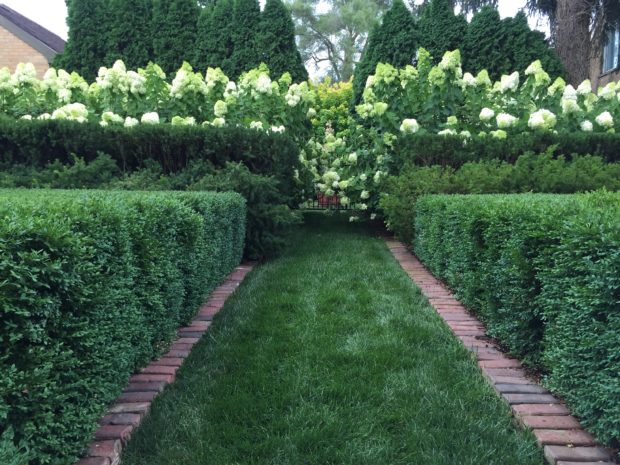 Yesterday morning, after an exceptionally heavy and blustery rain, the water soaked flowers had fallen over in to the path. We’ll see what happens once they dry out. There is no staking hydrangeas at this stage. If you are bound and determined to keep them upright, very stout and tall tomato cages need to be put in place in the spring. If the flower heads do not spring back up, I will cut some, put them in water, and let them dry indoors.
Yesterday morning, after an exceptionally heavy and blustery rain, the water soaked flowers had fallen over in to the path. We’ll see what happens once they dry out. There is no staking hydrangeas at this stage. If you are bound and determined to keep them upright, very stout and tall tomato cages need to be put in place in the spring. If the flower heads do not spring back up, I will cut some, put them in water, and let them dry indoors.
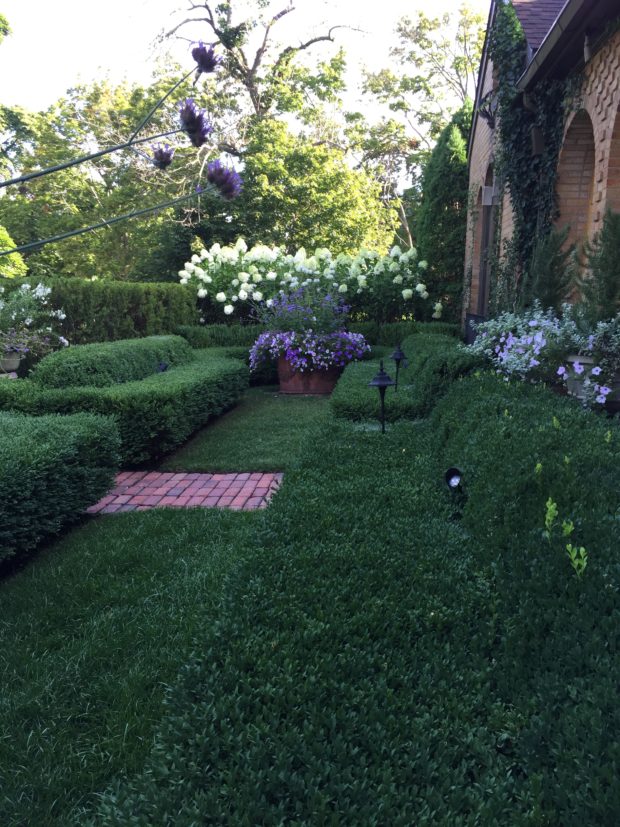 Limelight hydrangeas can provide an easy going and breezy sense of enclosure. My hydrangeas are planted in a block, not in a single row. Though the shrubs are very open growing, multiple staggered rows provide a dense green screen which makes my front yard garden quite private.
Limelight hydrangeas can provide an easy going and breezy sense of enclosure. My hydrangeas are planted in a block, not in a single row. Though the shrubs are very open growing, multiple staggered rows provide a dense green screen which makes my front yard garden quite private.
 Given enough room, a generous sweep of Limelight hydrangeas can be quite architectural in feeling. Once these hydrangeas are pruned in the spring, they are not pruned again until the following spring. Few deciduous shrubs can tolerate or perform well having been sheared. Hydrangeas are no exception. Prune to the best of your ability in the spring, and then turn loose of them. Looking for a rule? The plants will tell you a very detailed story. Very few things bother hydrangeas. They will bloom in part shade, but not as profusely. The flowers will be smaller, and the leaves will singe on the edges if they get too dry. I mulch them with bark fines in the spring after I prune. I water infrequently, but regularly. Outside of that, I just enjoy them.
Given enough room, a generous sweep of Limelight hydrangeas can be quite architectural in feeling. Once these hydrangeas are pruned in the spring, they are not pruned again until the following spring. Few deciduous shrubs can tolerate or perform well having been sheared. Hydrangeas are no exception. Prune to the best of your ability in the spring, and then turn loose of them. Looking for a rule? The plants will tell you a very detailed story. Very few things bother hydrangeas. They will bloom in part shade, but not as profusely. The flowers will be smaller, and the leaves will singe on the edges if they get too dry. I mulch them with bark fines in the spring after I prune. I water infrequently, but regularly. Outside of that, I just enjoy them.
 Limelight is a hybrid of hydrangea paniculata. Paniculata refers to the fact that the flower heads of these hydrangeas are comprised of hundreds of individual flowers arranged in a cluster around the flower stalk-this flower form is called a panicle. The individual florets will acquire a pink tinge as they age. When the temperatures cool down in the fall, the flowers will age to rose pink. I water the plants more in the early fall than I do in late summer. Truly? The sure sign of a plant that has gone too dry are flowers that brown before their time. I do everything I can to extend the hydrangea season. I do leave the flower heads on all winter – why not? Most of them stick tight throughout the winter for me.
Limelight is a hybrid of hydrangea paniculata. Paniculata refers to the fact that the flower heads of these hydrangeas are comprised of hundreds of individual flowers arranged in a cluster around the flower stalk-this flower form is called a panicle. The individual florets will acquire a pink tinge as they age. When the temperatures cool down in the fall, the flowers will age to rose pink. I water the plants more in the early fall than I do in late summer. Truly? The sure sign of a plant that has gone too dry are flowers that brown before their time. I do everything I can to extend the hydrangea season. I do leave the flower heads on all winter – why not? Most of them stick tight throughout the winter for me.
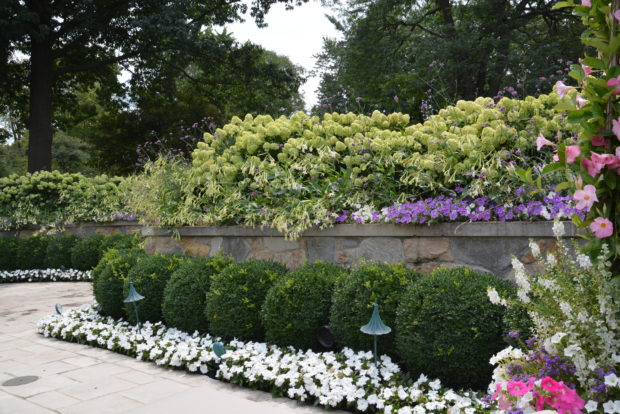 I do not grow hydrangea Little Lime at home, but I have planted plenty of them elsewhere. Their shorter stature means there are flowers at eye level, on top of this retaining wall. Had I planted the much bigger Limelight in this location, I would be looking in to the stems from the lower level. I recently planted a row of Little Limes in front of an old hedge of Limelights. This will insure flowers from top to bottom.
I do not grow hydrangea Little Lime at home, but I have planted plenty of them elsewhere. Their shorter stature means there are flowers at eye level, on top of this retaining wall. Had I planted the much bigger Limelight in this location, I would be looking in to the stems from the lower level. I recently planted a row of Little Limes in front of an old hedge of Limelights. This will insure flowers from top to bottom.
 The Little Limes smaller size makes them quite companionable to a host of other perennial and annual plants.
The Little Limes smaller size makes them quite companionable to a host of other perennial and annual plants.
 Hydrangea Bobo is not related to either Limelight or Little Lime, but it is a panicle hydrangea. Hybridized by Johan Van Huylenbroeck, the same breeder that developed the Pinky Winky hydrangea, was patented and introduced by Proven Winners. Topping out at 3′ tall by up to 4′ wide, it is beautiful in a mass. Though this group has only been in the ground for 2 inhospitably hot and dry months, they are blooming. By next year, the chances are good they will completely cover this large sunny area. I can cross this group of Bobo’s off my list of plantings to worry about. They’ll be back.
Hydrangea Bobo is not related to either Limelight or Little Lime, but it is a panicle hydrangea. Hybridized by Johan Van Huylenbroeck, the same breeder that developed the Pinky Winky hydrangea, was patented and introduced by Proven Winners. Topping out at 3′ tall by up to 4′ wide, it is beautiful in a mass. Though this group has only been in the ground for 2 inhospitably hot and dry months, they are blooming. By next year, the chances are good they will completely cover this large sunny area. I can cross this group of Bobo’s off my list of plantings to worry about. They’ll be back.
